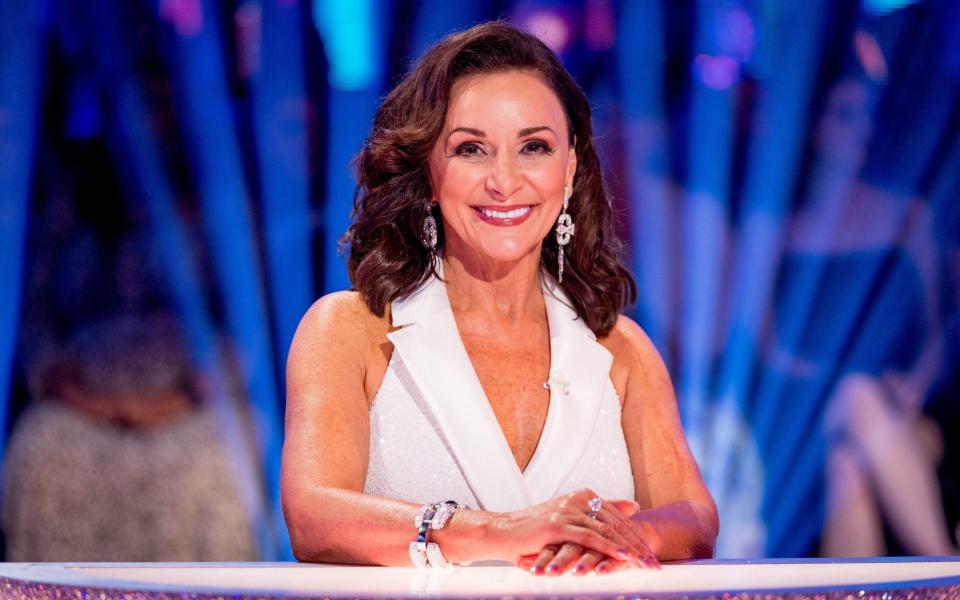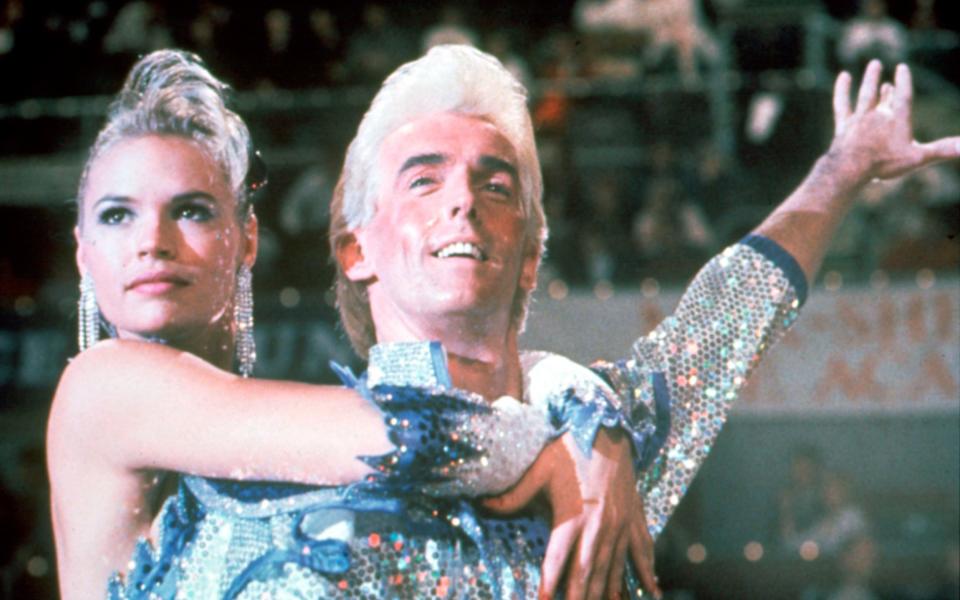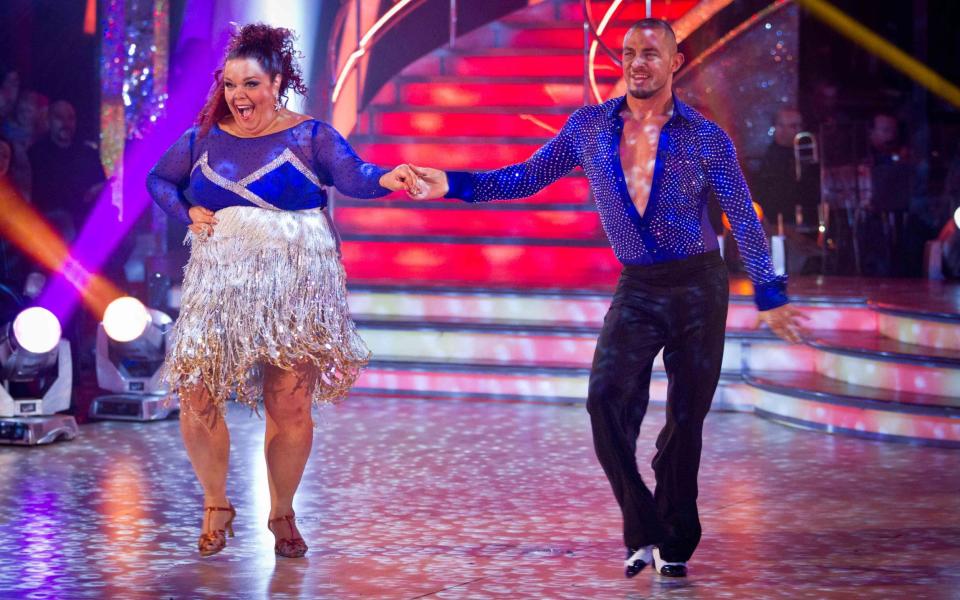What does it take to reach the top in the world of competitive ballroom and Latin dancing? In her recent interview on Desert Island Discs with Lauren Laverne, Strictly Come Dancing head judge Shirley Ballas reiterated the need to be resilient and “bulletproof” as she navigated the grueling schedules, restrictive diets, misogyny and bullying she experienced in the dance world.
Since the release of Baz Luhrmann’s Strictly Ballroom in 1992, the competitive dance industry has become known – and often derided – for its short tempers, sky-high egos and tiny sparkly dresses. Leans strictly into some of the stereotypes with its celebration of big characters, buckets of fake tan and an abundance of sequins. But it’s also a world with a dark side where – traditionally at least – men lead and women follow, although thankfully the growth of same-sex dancing is changing.


Many dancers will recognize the kind of sacrifices Ballas made in her early years: early mornings, late nights, hours of traveling to and from classes and little time for a life outside of dancing. That said, her story is also exceptional: she is the only woman to win the British Open Professional Latin – the most famous and prestigious championship that takes place every year at the Blackpool Dance Festival – with two different partners, her first husband, Sammy. Stopford, in 1983, and her second, Corky Ballas, in 1995-1996.
Of the thousands who may take their first steps at dance schools, few reach that top level. The precise figure of how many people dance ballroom and Latin in Britain is difficult to confirm these days as there are several teaching associations. The umbrella organization is the British Dance Council, which oversees competitive dance rules in Britain; the equivalent for international competitions is the World Dance Council. However, in recent years, partly due to political schisms, other organizations such as the British DanceSport Association and the World Dance Organization have formed to offer their own competitions.
“One of the biggest issues we face in this country is the judging of ballroom competitions,” says Robin Windsor, a former competitor and professional dancer on Strictly. “It’s not about who crosses the finish line first. It is based on opinions and it is very political.” At a major ballroom dance competition, such as the British Open in Blackpool, the judges, standing with their clipboards at the edge of the dance floor, may have to narrow down two hundred dancers to a final six, round by round. And overall, there isn’t much turnover among the top championship finalists.
“It doesn’t leave things open,” Windsor says. “You usually know who the next world champion will be.” And he shares a rare example. “I know a famous dancer who was told that if he paid a certain amount of money he could become world champion within three or four years,” he continues. “It can be a very corrupt world.”


It can also be difficult for the judges – many of whom are decent and hardworking, as Ballas notes. They might have the length of a 90-second song to decide who goes through, leaving two or three seconds of attention for each dancing couple on the floor – if they’re lucky. In this system, dancers who are known for previous success are rewarded. Competitive couples who can afford it book lessons with the best coaches who will probably also judge at some point and probably look more favorably on familiar faces.
On Desert Island Discs, Ballas recalls “the massive bullying in the industry by men at the top… I was teaching the best couples in the world and then threats were sent to certain couples saying, ‘There are nine of us and one from her – if If you train with her, we will ensure that you do not make it in the industry.’”
Ballas hesitates to “name and shame,” but there are undoubtedly a few hints in her memoir, Behind the Sequins. “If you have an opinion as a woman, it is never really listened to,” she told Dancing Times in 2020. “Although we now have a new council called the World Dance Organization [WDO] alongside the World Dance Council. Let me say that I think the WCO is much more open and listens to opinions, and they do everything they can to make everything fair.”
The presidents of the British Dance Council, World Dance Council and British DanceSport Association, and the chairman of the WDO, are all former champions – and all men. An industry insider, who wishes to remain anonymous, suggests that “these former competitors are bringing their competitive mentality into the political world.” For example, a champion dancer does not necessarily have to be an experienced coach or a strong chairman of an association.
Besides the challenges of paying for the top coaches and navigating politics, there are the costs of grooming and costumes. Apart from make-up, hair, tanning and teeth whitening, “dresses are the biggest expense as they can cost between £2,000 and £5,000,” says Viktoriya Wilton, an American Smooth contributor and director from Inspiration 2 Dance. school in Piccadilly. “A professional is expected to have a dress designed that suits his body, character and style.”


And so in terms of physique. “There is a certain standard expected of a professional or top artist,” says Wilton. “I’m lucky in that I’m naturally slim, so I didn’t have to stick to a strict diet, although I still did. I have heard teachers comment on other girls’ statements [weight] but honestly also for boys.”
Ballas told how her second husband, Corky, hid a cockroach in her donuts while she was pregnant, and on another occasion how a coach told her that her postpartum body was “making people physically sick.” Although dancers generally report that today’s coaches are more respectful of their students, the pressure to keep the weight down has persisted. Moreover, there is also Instagram to contend with these days. “If you go back 20 years to when I was competing, there was no social media,” Windsor remembers. “There was no YouTube, actually very little internet. Everyone had their own flair. As time has passed, everyone has become copies of each other.
“I recently went to the International Championships and all the dancers are size four or six. Teenage girls looking at their idols may think that they have to look like this to dance, when that is not the case. When I was on Strictly, my partner Lisa Riley proved that. You can be a size 12, 14 or 16 and still dance brilliantly. But I think if you were a little on the heavier side, that might work against you as a competitive dancer.
Despite the challenges in the dance industry, there is still a strong sense of camaraderie in the dance world and a deep admiration for the participants, who are dedicated to their art. “It’s like football,” says Gerald Schwanzer, director of DSI London, the company that makes Strictly’s dresses. “At the end of the day, all fans have the same religion, but they are also fiercely competitive.”
Passions run high, Wilton says. “Of course you make friends because of what you have in common… On the other hand, there can be some really underhanded behavior. I’ve had fights with people in the dance world and I’ve made some great friends. It’s just a very passionate job – and dancers are emotional.”


She would like to see more respect in the way couples communicate. “The things I’ve seen men do to women in rehearsals are absolutely disgusting,” Windsor agrees. “People are yelling and screaming at each other. But I’ve also seen a girl punch their partner in the face and storm out. I think it’s because there is competitiveness: everyone wants to be the best. But I do think there is a problem with toxic masculinity.”
It is a sector that must think about its protection. Last month, former ballroom and Latin dancing champion Richard Still pleaded guilty at Reading Crown Court to three charges of sexual activity with a child. Yet the dance school owner and former security officer for the British Dance Council admitted asking a girl to send him images that were sexual or erotic in nature in exchange for money paid into her bank account.
While this kind of abuse of power is clearly unacceptable, there are specific challenges to teaching ballroom and Latin. As we all see on Strictly, if you’re a teacher, you have to touch the student. “There are ways and means to do that without crossing a line,” Windsor said. “I feel like there’s still a lot to explore,” he continues, citing a bad personal experience as a youth dancer. “I don’t really know how to approach this. But for me it is an industry where people think they can get away with a lot more than they can – or should.”